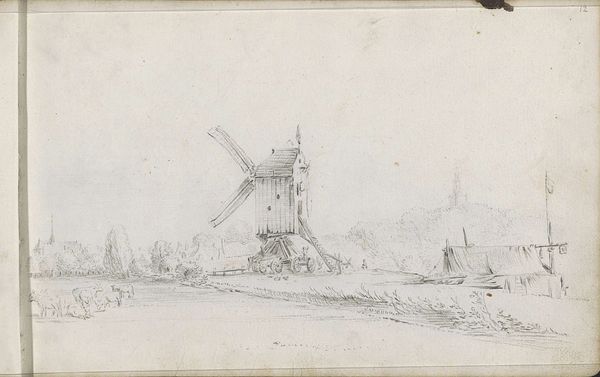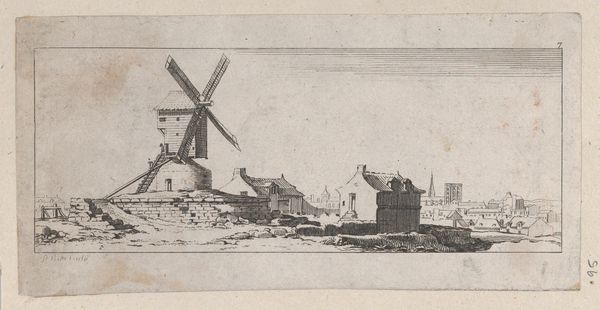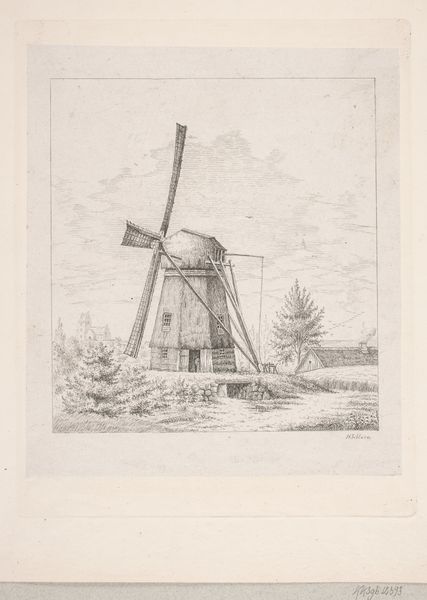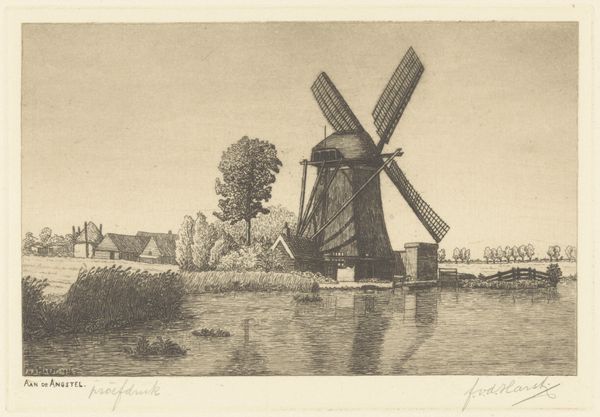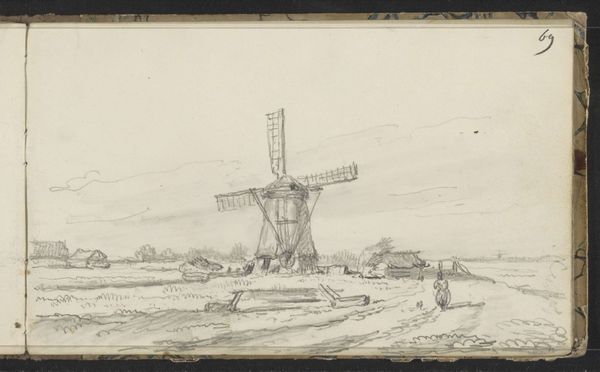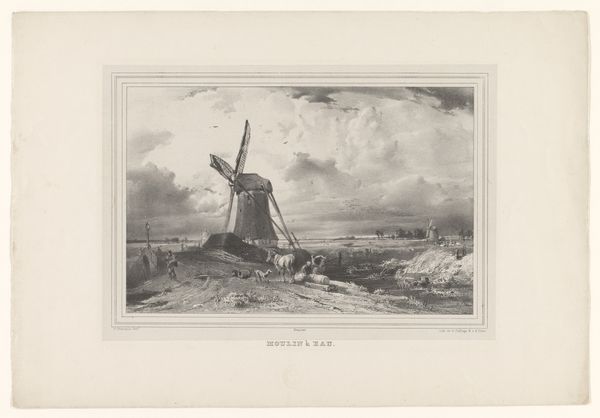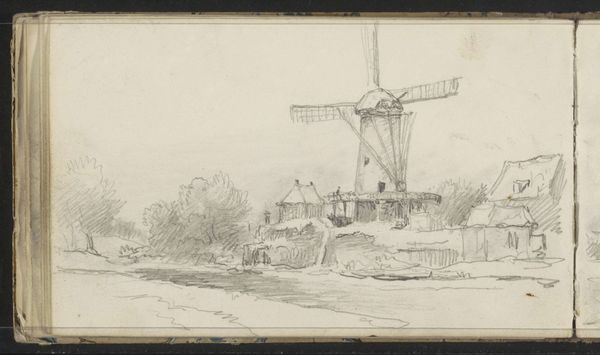
drawing, pencil
#
drawing
#
landscape
#
pencil
#
watercolor
#
realism
Copyright: Rijks Museum: Open Domain
Curator: Let’s discuss this interesting drawing, "Molen aan een waterkant" or "Mill on a Waterfront," created sometime between 1820 and 1872. Hendrik Abraham Klinkhamer used primarily pencil, and possibly some watercolor. Editor: It has a serene quality, doesn't it? The subdued tones give it a sense of quiet industry; the meticulous detail, though, makes me consider labor. What's its historical significance? Curator: Mills were the factories of their time. In a Dutch context, they represented technological advancement, a shift in how resources were processed. Editor: Precisely, thinking about watermills specifically, how did they impact class structures by providing an independent way to grind grain for all? How do the detailed depictions of the woodwork represent skilled labor practices during this period? Curator: Water management also plays a part; the relationship between humans and the land is evident in Klinkhamer’s rendering of the landscape. Its reliance on material technologies, that enabled a collective identity centered around its control over the landscape, is visible even now. Editor: This is clearly realism, and yet there is still an evident artistic skill deployed to highlight details, making labor a prominent factor for those working or residing there. The texture of the wooden beams seems especially detailed. Is it more than mere technical draftsmanship? Curator: It gives dignity to these quotidian aspects, recognizing and appreciating material engagement and lived labor. There's no romanticization of the scene. It shows respect. Editor: Definitely. Now that I observe it in a deeper sense, the details draw me towards understanding these materials and their specific time period in history. A study on the technological transformation during this time period becomes available when understanding the historical implication with windmills. Curator: Considering that, I agree; it bridges technology with human life in its historical moment. The act of observation and recording becomes almost political. Editor: Seeing it from an approach on materialism, with a brief pause and consideration, it becomes clear it shows respect and acknowledgment of human effort during its creation.
Comments
No comments
Be the first to comment and join the conversation on the ultimate creative platform.




